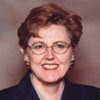Ask yourself these questions as you prepare documents to promote your business:
What is your Objective?
What do you want to communicate? What do you want the tone and look to be? Do you want it to be bold and dramatic or subtle and understated?
Who is your Audience?
Are you aiming the piece primarily at people who know about your business already? Or, will it introduce your company to new prospects? Knowing who will be reading your brochure will help you create the look and tone you desire and communicate your message effectively.
Who will be your Designer?
Graphic design for the non-designer can be a challenge, so you may want to hire a professional. Or you may want to do your own design. If you're not experienced in desktop publishing, here are some design tips to help you achieve a polished look.
What Type Styles and Sizes should I use?
Creative use of type can enhance every printed piece. Styles, sizes and weights should be based on the objective of the document and the look and style you want to convey. Boldface type is often used for headlines to catch the reader's eye. Type for the body (sometimes called text) is usually a lighter and smaller font. The text should be set at least 10 point type for legibility. Most importantly, do not use more than three styles of type on a page.
How should I arrange Text and Graphics?
Photographs, illustrations, graphs, etc., help convey messages that could otherwise require lengthy explanation. But don't clutter the page with too many graphics. Allow for areas of white space which makes a page more readable and appealing. Copy and graphics should be laid out in groups in an orderly way on the page. Don't run the text across the entire width of the page. It's better to break the page into columns of type and intersperse the text with photos and illustrations. When laying out facing pages, think of them as one unit. Consider spreading the heading and art across both pages to create continuity while keeping the text in smaller columns, each confined to a single page.
Consider using West Design to design your next brochure or printed piece!


No comments:
Post a Comment